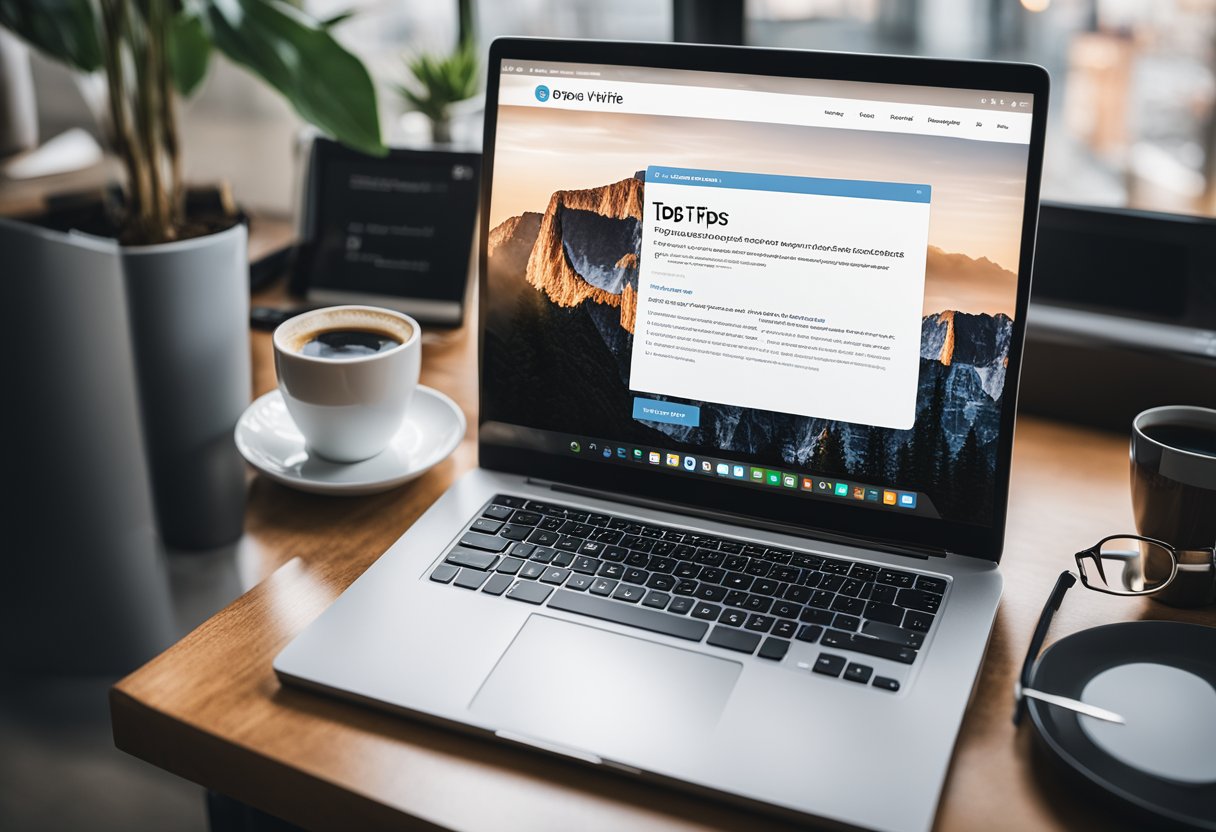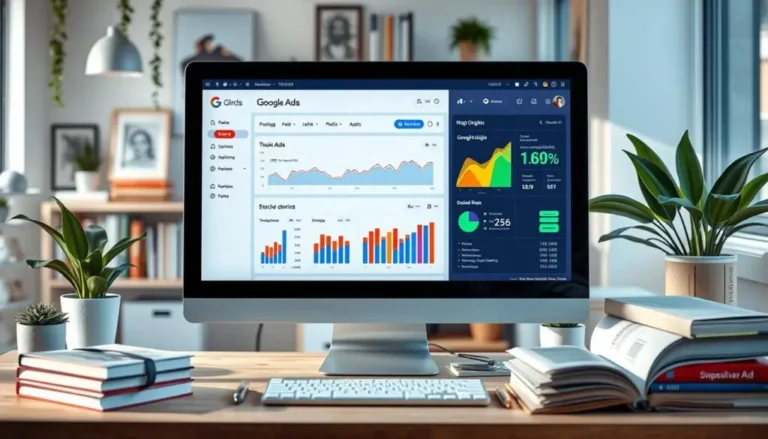Top 5 Tips to Write SEO-Optimized Blog Posts
Are you struggling to get your blog posts noticed in the vast sea of online content? You’re not alone. With millions of articles published daily, standing out can feel like an uphill battle. But what if there was a way to make your content shine and Attract more readers?
Enter SEO-optimized blog posts – your secret weapon for boosting visibility and driving traffic to your website. By mastering the art of search engine optimization, you can transform your blog from a hidden gem to a sparkling diamond in the digital landscape. 💎 Ready to unlock the potential of your content and skyrocket your online presence?
In this article, we’ll dive into the top 5 tips for writing SEO-optimized blog posts that will help you climb the search engine rankings and captivate your target audience. From understanding SEO basics to crafting compelling headlines and creating high-quality content, we’ve got you covered. Let’s embark on this journey to elevate your blogging game and leave your competition in the dust!
Table of Contents
Understand Search Engine Optimization (SEO) Basics
Define SEO and its importance
Search Engine Optimization (SEO) improves a website’s visibility and ranking in search engine results pages (SERPs). For bloggers, SEO is crucial as it helps Increase organic traffic, reach target audiences, and establish authority in their niche.
Identify key SEO elements for blog posts
Several essential SEO elements contribute to a well-optimized blog post:
- Keyword optimization
- Meta descriptions
- Title tags
- Header tags (H1, H2, H3)
- Internal and external links
- Image alt text
- URL structure
Learn about search engine algorithms
Search engines use complex algorithms to determine the relevance and quality of web content. Understanding these algorithms can help you create more effective SEO strategies:
| Algorithm Factor | Description | Importance |
|---|---|---|
| Content Quality | Relevance and value of information | High |
| User Experience | Site speed, mobile-friendliness, and navigation | Medium |
| Backlinks | Quality and quantity of external links | High |
| Social Signals | Shares, likes, and comments on social media | Low |
By grasping these SEO basics, you’ll be better equipped to optimize your blog posts for search engines. This foundation will help you implement more advanced strategies as you improve your blog’s visibility and reach. Next, we’ll explore how to research and use relevant keywords to enhance your SEO efforts further.
Research and Use Relevant Keywords

Now that we’ve covered the basics of SEO, let’s dive into the crucial task of researching and using relevant keywords effectively. This step is fundamental to creating SEO-optimized blog posts that rank well in search engine results.
A. Conduct keyword research
Keyword research is the foundation of any successful SEO strategy. It involves identifying the terms and phrases your target audience uses when searching for information related to your topic. Here are some steps to conduct effective keyword research:
- Brainstorm seed keywords
- Analyze search volume and competition
- Identify user intent
- Consider seasonal trends
B. Incorporate long-tail keywords
Long-tail keywords are longer, more specific phrases that typically have lower search volume but higher conversion rates. They are essential for targeting niche audiences and capturing more qualified traffic. Here’s a comparison of short-tail and long-tail keywords:
| Short-tail Keywords | Long-tail Keywords |
|---|---|
| Shoes | Best running shoes for flat feet |
| Pizza | Gluten-free pizza delivery near me |
| Laptop | Affordable gaming laptops under $1000 |
C. Use keyword tools effectively
Several keyword research tools can help streamline your process and uncover valuable insights. Some popular options include:
- Google Keyword Planner
- SEMrush
- Ahrefs
- Moz Keyword Explorer
- Ubersuggest
These tools provide data on search volume, keyword difficulty, and related terms, helping you make informed decisions about which keywords to target.
D. Avoid keyword stuffing
While it’s important to use relevant keywords throughout your content, it’s equally crucial to avoid keyword stuffing. This practice can lead to penalties from search engines and create a poor user experience. Instead, focus on:
- Natural keyword placement
- Using variations and synonyms
- Prioritizing readability and value for the reader
By following these guidelines for researching and using relevant keywords, you’ll be well on your way to creating SEO-optimized blog posts. Next, we’ll explore how to craft compelling and SEO-friendly headlines that capture your audience’s attention and improve your search rankings.
Craft Compelling and SEO-Friendly Headlines
`Now that you understand the importance of keywords, let’s focus on creating headlines that capture attention and boost your SEO efforts. Crafting compelling and SEO-friendly headlines is crucial for attracting both search Engines and readers.
Include target keywords in headlines
Incorporating your target keywords into your headlines is essential for improving your blog post’s visibility in search engine results. However, it’s important to do this naturally and avoid keyword stuffing. Here are some tips:
- Place the primary keyword near the beginning of the headline
- Use secondary keywords if they fit naturally
- Ensure the headline still makes sense and flows well
Create attention-grabbing titles
While SEO is important, your headlines should also entice readers to click and read your content. Here are some techniques to create captivating titles:
- Use power words (e.g., “ultimate,” “essential,” “proven”)
- Invoke curiosity or emotion
- Address a specific problem or offer a solution
- Use numbers or lists (e.g., “7 Ways to…”)
Keep headlines concise and descriptive
Striking a balance between being informative and concise is key to crafting effective headlines. Here’s a comparison of good and bad headline practices:
| Good Practices | Bad Practices |
|---|---|
| Use 50-60 characters | Exceed 70 characters |
| Be specific and clear | Use vague or clickbait titles |
| Include main topic | Omit key information |
| Use active voice | Use passive voice |
Remember, your headline is often the first thing potential readers see. By following these guidelines, you’ll create headlines that not only appeal to search engines but also compel users to click and read your content.
Optimize Content Structure and Readability

Now that we’ve covered the importance of headlines, let’s dive into optimizing your content’s structure and readability. These elements are crucial for both user experience and search engine rankings.
A. Use proper heading tags (H1, H2, H3)
Proper use of heading tags is essential for organizing your content and helping search engines understand its structure. Here’s a quick guide:
- H1: Use only once for the main title
- H2: Main sections of your content
- H3: Subsections within H2 sections
B. Write scannable content with short paragraphs
In today’s fast-paced digital world, readers often scan content before deciding to read in-depth. Make your content scannable by:
- Using short paragraphs (2-3 sentences)
- Including white space between paragraphs
- Highlighting key points with bold or italic text
C. Incorporate bullet points and numbered lists
Lists are an excellent way to present information concisely and improve readability. Here’s why you should use them:
- They break up long blocks of text
- They make information easy to digest
- They attract the reader’s eye
D. Include relevant internal and external links
Linking is crucial for SEO and user experience. Here’s a comparison of internal and external links:
| Internal Links | External Links |
|---|---|
| Improve site navigation | Build credibility |
| Distribute page authority | Provide additional resources |
| Keep readers on your site | Show industry knowledge |
E. Optimize meta descriptions and URLs
While not visible in the main content, meta descriptions and URLs play a significant role in SEO:
- Meta descriptions: Write compelling, keyword-rich summaries (150-160 characters)
- URLs: Keep them short, and descriptive, and include target keywords
By implementing these structure and readability optimizations, you’ll create content that’s not only SEO-friendly but also user-friendly. Next, we’ll explore how to create high-quality, engaging content that keeps readers coming back for more.
Create High-Quality, Engaging Content

Now that we’ve covered the structural aspects of SEO-optimized blog posts, let’s dive into the heart of what makes content truly valuable: its quality and engagement factor.
Focus on providing value to readers
The cornerstone of high-quality content is its ability to provide tangible value to your audience. This means:
- Addressing their pain points
- Offering practical solutions
- Sharing unique insights or perspectives
Write comprehensive, in-depth articles
Depth and comprehensiveness are key factors in creating engaging content:
- Cover topics thoroughly
- Include relevant examples
- Cite credible sources
- Anticipate and answer potential questions
Use multimedia elements
Incorporating various media types can significantly enhance engagement:
| Media Type | Benefits |
|---|---|
| Images | Break up text, illustrate concepts |
| Videos | Explain complex ideas, increase time on page |
| Infographics | Summarize information visually, encourage sharing |
Encourage social sharing and comments
Fostering interaction can boost engagement and extend your content’s reach:
- Include Social sharing buttons
- End with thought-provoking questions
- Respond promptly to comments
- Consider running contests or polls
By focusing on these aspects, you’ll create content that not only ranks well but also genuinely resonates with your audience, encouraging them to return and share your posts with others.
Writing SEO-optimized blog posts is a powerful way to boost your online visibility and attract more readers. By understanding SEO basics, researching relevant keywords, crafting compelling headlines, optimizing content structure, and creating high-quality content, you can significantly improve your blog’s search engine rankings.
Remember, SEO is an ongoing process that requires consistency and adaptation to changing algorithms. Implement these five tips in your blogging strategy, and you’ll be well on your way to creating content that not only resonates with your audience but also ranks well in search results. Start optimizing your blog posts today and watch your online presence grow!







